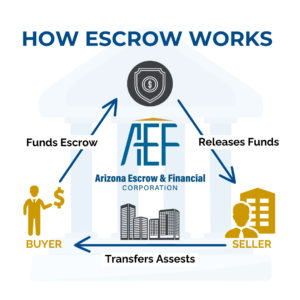
Imagine that you’re in the final stages of selling a high-value commercial property. Months of negotiations, meticulous planning, and countless hours spent ensuring every detail is perfect are about to pay off. Then, without warning, your transaction is thrown into chaos. A fraudster has slipped through the cracks, exploiting vulnerabilities you never saw coming.
This scenario is not unheard of in business sales and commercial property transactions. Fraudulent activities can turn a seamless transaction into a costly debacle; however, understanding these threats and learning how to combat them can help protect anyone involved in these high-stakes sales.
In this blog, we’ll cover the most prevalent types of fraud in the industry, highlighting practical examples that illustrate the methods and tactics fraudsters use.
- Seller Impersonation Fraud
- Title Fraud
- Wire Fraud
See our fraud prevention page for more information, including free guides on best practices to protect your transactions from fraud.
 What is Seller Impersonation Fraud?
What is Seller Impersonation Fraud?
Seller impersonation fraud is a deceptive practice where a fraudster poses as the legitimate owner of a business or property to manipulate or execute unauthorized sales and transactions.
This type of fraud often involves sophisticated methods to convince buyers and financial institutions that they are dealing with the rightful owner, thereby facilitating the transfer of funds or property to the fraudster’s control.
Example of Seller Impersonation Fraud
Imagine a scenario where a business owner, Jane, is looking to sell her company. A fraudster, having obtained detailed information about Jane’s business through phishing or hacking, contacts potential buyers using a spoofed email address similar to Jane’s.
The fraudster engages in negotiations, even providing forged documents and verifiable but fraudulent identification. The unsuspecting buyer, believing they are dealing with Jane, transfers a significant down payment to a bank account controlled by the fraudster.
By the time the real Jane and the buyer realize something is amiss, the fraudster has already withdrawn the funds and vanished, leaving both parties in a complicated legal and financial predicament.
 What is Title Fraud?
What is Title Fraud?
Title fraud, also known as deed fraud, is a serious issue in business and commercial property sales where a fraudster unlawfully transfers ownership of a property. This is typically done using forged documents or fraudulent identification to record the transfer of title, thereby gaining control over the property.
The perpetrator might then take out loans against the property or sell it to an unsuspecting buyer, leaving the rightful owner with significant financial and legal challenges.
Connection to Deed Fraud
Title fraud and deed fraud are essentially the same thing. Both terms refer to the illegal transfer of property ownership through deceit. Fraudsters exploit vulnerabilities in property recording systems, often using minimal scrutiny processes like quitclaim deeds, which require less documentation and are cheaper to file.
Example of Title Fraud
Consider a commercial property owner, Tom, who owns a warehouse. A fraudster, having gathered sufficient information about Tom and his property, forges a quitclaim deed to transfer ownership of the warehouse to themselves. They then record this fraudulent deed with the local county recorder’s office.
With the title now appearing to be legally in their name, the fraudster takes out several loans against the warehouse. Tom only discovers the fraud when he tries to refinance his property and finds multiple liens placed on it.
Don’t let fraud disrupt your success—learn how to safeguard your deals and maintain your peace of mind.
 What is Wire Fraud
What is Wire Fraud
Wire fraud in business sales and commercial transactions involves the use of electronic communications, such as email or phone, to defraud individuals or organizations out of money or property.
This type of fraud is particularly prevalent in real estate and commercial transactions where large sums of money are frequently transferred electronically.
Fraudsters often impersonate parties involved in the transaction or hack into email accounts to redirect payments to fraudulent accounts.
Types of Wire Fraud
- Business Email Compromise (BEC)
- Phishing and Spear Phishing
- Fake Invoices and Payment Instructions
Wire Fraud Examples
Business Email Compromise (BEC)
In a BEC scam, fraudsters gain access to an email account of a key player in a transaction, such as the CFO or a real estate agent. Once inside, they monitor the account for upcoming transactions. At the right moment, they send a spoofed email to the buyer or financial officer, instructing them to wire the payment to a different, fraudulent bank account.
Example:
A fraudster gains access to the email account of a real estate agent handling the sale of a commercial property. They send a spoofed email to the buyer with new wire transfer instructions, directing the buyer to send funds to a fraudulent account. Believing the email to be legitimate, the buyer completes the transfer, resulting in a significant financial loss.
Phishing and Spear Phishing
Fraudsters send emails that appear to be from legitimate sources, such as business partners or financial institutions, asking for sensitive information or prompting the recipient to click on malicious links. These emails often contain links to fake websites that look authentic.
You may have heard of phishing before, which is a widespread attempt to scam masses of people, whereas spear phishing is a targeted phishing attack on a specific person or organization.
Example:
An executive involved in the sale of a business receives an email that appears to be from their bank, requesting verification of their account details due to a “security issue.” The email includes a link to a fake website that looks identical to the bank’s login page. Upon entering their credentials, the fraudster captures the information and uses it to initiate unauthorized wire transfers, compromising the funds intended for the business sale.
Fake Invoices and Payment Instructions
Fraudsters send fake invoices or payment instructions to businesses, often appearing to come from legitimate vendors or service providers. These invoices request payment for goods or services that were never provided.
Example:
A fraudster sends a fake invoice to the accounting department of a company selling commercial property, posing as a legitimate vendor involved in the transaction. The invoice requests payment for supposed closing costs and includes bank details for a fraudulent account. The accounting department, believing the invoice to be authentic, processes the payment, diverting funds away from the actual transaction.
Forewarned is Forearmed!

While it’s true that fraud can occur in business sales and commercial property transactions, it shouldn’t deter you from pursuing these ventures.
Forewarned is forearmed.
By educating yourself about potential risks, taking the necessary precautions, and partnering with reputable professionals, you can navigate your transaction smoothly and safely.
Reach out to our team of trusted experts for information about impartial escrow services that help all parties feel confident and at ease.
Disclaimer: Arizona Escrow & Financial Services makes no express or implied warranty regarding the accuracy, completeness, or reliability of the information provided and assumes no responsibility for errors or omissions. The information presented is for general informational purposes only and should not be considered legal, financial, or professional advice.
Arizona Escrow & Financial Services, the Arizona Escrow logo, and www.arizonaescrow.com are trademarks or registered trademarks of Arizona Escrow & Financial Services and/or its affiliates. Unauthorized use of these trademarks is strictly prohibited.
For more information, please visit www.arizonaescrow.com or contact us directly.

Arizona Escrow Editor
Founded in 1976 by Donald E. Graham, Arizona Escrow & Financial Corporation is Arizona’s largest independent escrow provider, specializing in business sales, personal property, and commercial real estate transactions. Its customer base includes individuals, businesses, business and real estate brokers, law firms, commercial and SBA lenders, banks, major corporations, tribal communities, state and municipal government organizations and departments, internet entities, and other parties requiring an experienced and professional escrow company. Under the leadership of CEO Monica May-Dunn since 2023, AEF remains committed to personalized service, instilling confidence in clients, and setting the standard for excellence in the escrow industry. For more information, visit arizonaescrow.com/services.
Disclaimer: Arizona Escrow & Financial Services makes no express or implied warranty regarding the accuracy, completeness, or reliability of the information provided and assumes no responsibility for errors or omissions. The information presented is for general informational purposes only and should not be considered legal, financial, or professional advice.
Arizona Escrow & Financial Services, the Arizona Escrow logo, and www.arizonaescrow.com are trademarks or registered trademarks of Arizona Escrow & Financial Services and/or its affiliates. Unauthorized use of these trademarks is strictly prohibited.
For more information, please visit www.arizonaescrow.com or contact us directly.
